Elephant Box, chili table tennis balls to educate elephants
Published 22 January 2016 by Caroline Grellier
When researchers from Cirad meet makers from Lourmarin (Provence region, France), the result is the Elephant Box that could solve the man-elephant conflict in Africa. The first experimentation took place in December in Gabon.
Each year, the man-elephant conflict kills 600 elephants in Zimbabwe. Having had enough of elephants venturing at nightfall on their plantations to fill their stomachs, destroying their crops at the same time, the villagers resort to poaching more and more. The devastated plots also create a major economic problem since the population’s food security is at stake: crops make up the food supply of families for the whole year. Men and elephants therefore covet the same lands but without finding common ground. How does one guide elephants through transhumance corridors for them to fill up with the 150 kg of daily vegetation they need without injuring them?
Sébastien Le Bel, veterinary surgeon at Cirad (International agronomical research center for development) and Mike La Grange, Zimbabwean expert in wild animals and elephant behavior specialist, worked on the subject by developing a chili oil propellant with automatic firing. The principle is easy: throw on an elephant a table tennis ball, filled beforehand with chili oil injected with a syringe. Rest assured, no harm done to the elephant, the mucous membrane of which is just very sensitive to spiced mixtures. It is about capitalizing on the intelligence of the animal that will remember this unpleasant experience and will no longer venture in that direction.
First prototype… impossible to reproduce
The first prototype produced looks like a kind of rotational molded plastic gun, operating with gasoline vapor, with flat trajectory firing of 50 to 60 meters. Tested in situ in Zimbabwe, then presented to Global forest convention in Durban, it caught the eye of the FAO (Food and Agricultural Organization) in Gabon, a country also concerned by this conflict. A device admittedly effective but impossible to reproduce and too expensive to be deployed locally in the field.
The Theme-based Technology Transfer Consortium (CVT) “Valorisation Sud” then comes in the loop and gets in touch in June 2015 with La Fruitière numérique, the Lourmarin fablab (Provence region, France), launched a few months earlier.
“Cirad and CVT came to see us and brought us the gun so we could study the mechanism. Our only bill of specifications was to make it simple and inexpensive. I was on holiday for a fortnight so I had time to think!”
Georges Bonnici, fabmanager of La Fruitière numérique
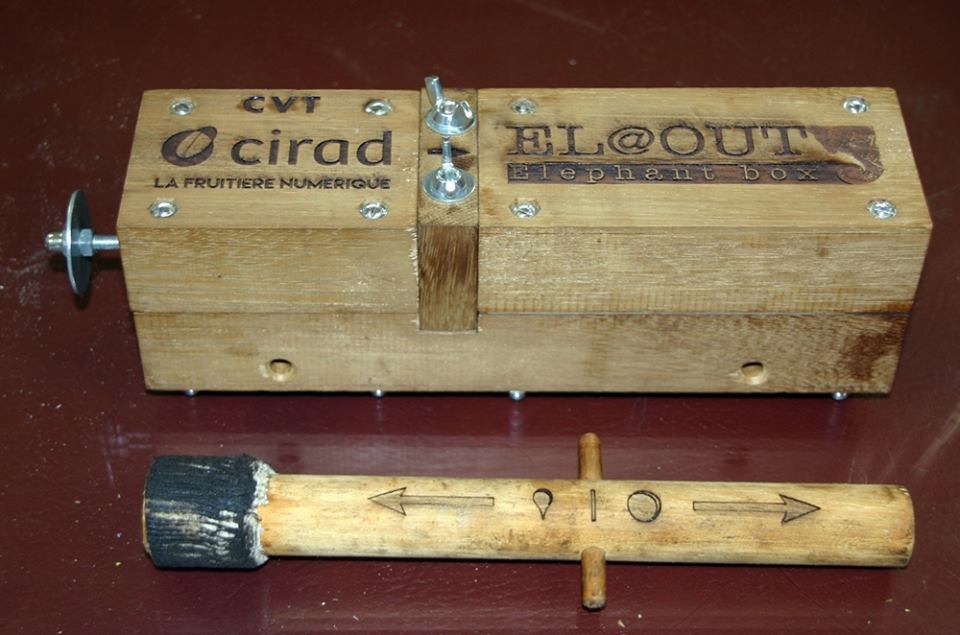
Georges Bonnici, fabmanager, then revamps the propulsion system by using affordable materials: threaded rods, washers, car springs, protected in a wooden box.
In December 2015 he flies to Gabon for an intensive field mission. Objective: train the future trainers in charge of the production of the Elephant Box, produce them, set them up and test them in the forest.
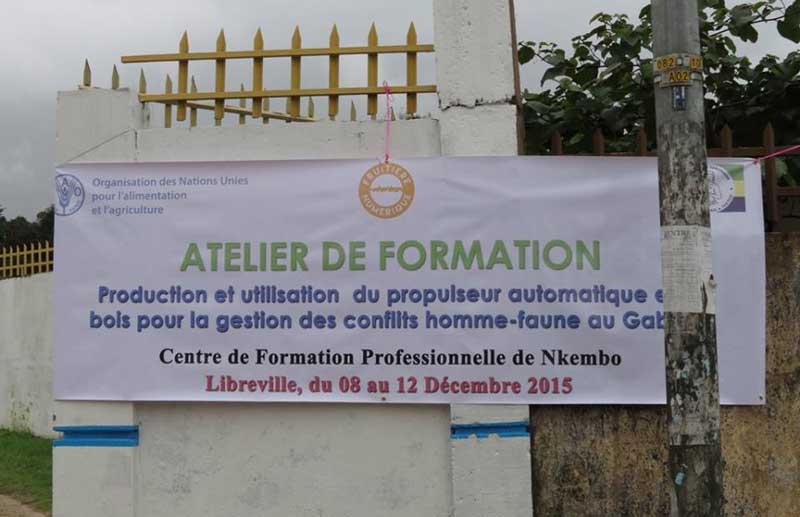
“Even if finding two nuts on site can take half a day, producing an Elephant Box only costs 6,000 CFA francs (so €9) and one man-workday, against €600 previously. And in the end it looks like a piece of wood!”
Georges Bonnici, fabmanager of La Fruitière Numérique
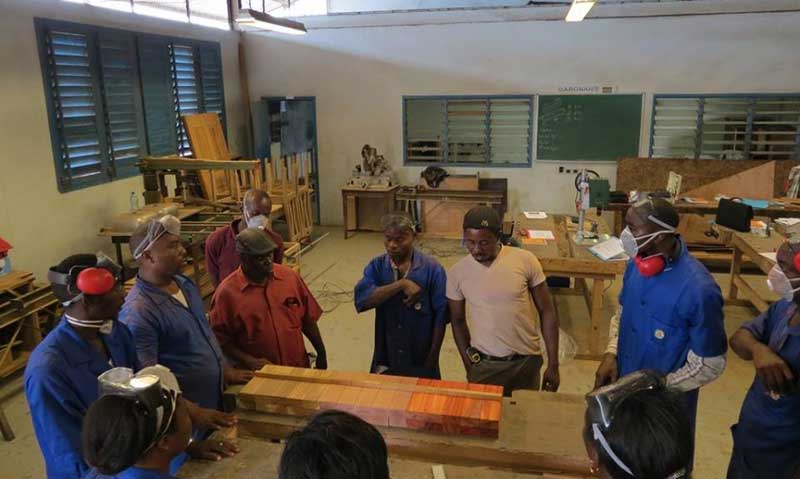

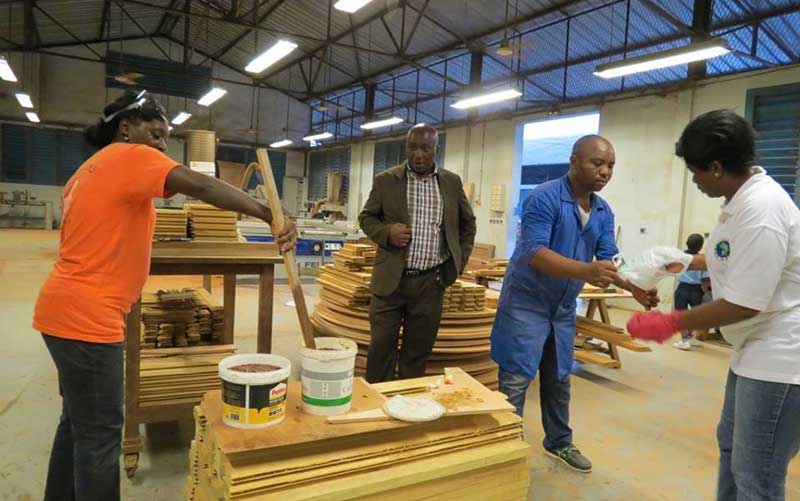
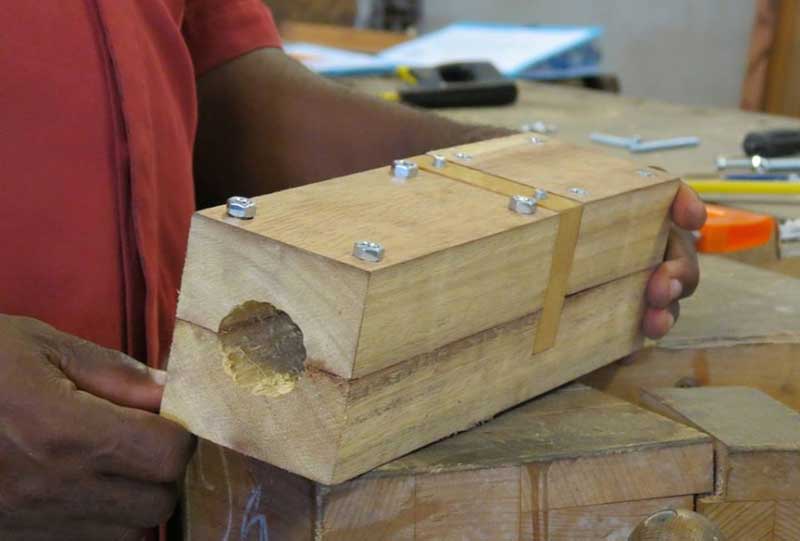
The elephant will initially be disrupted by the noise of the trigger (a wooden rod with a piece of string, a powder charge); then the ball shot out at a speed of 112 mph will create a collision on the elephant; and at the time of impact the broken ball will release the famous mixture made from crushed chili and ethyl alcohol.
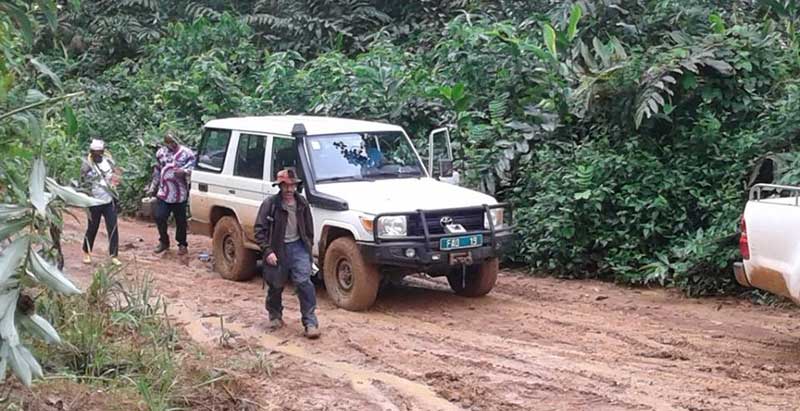
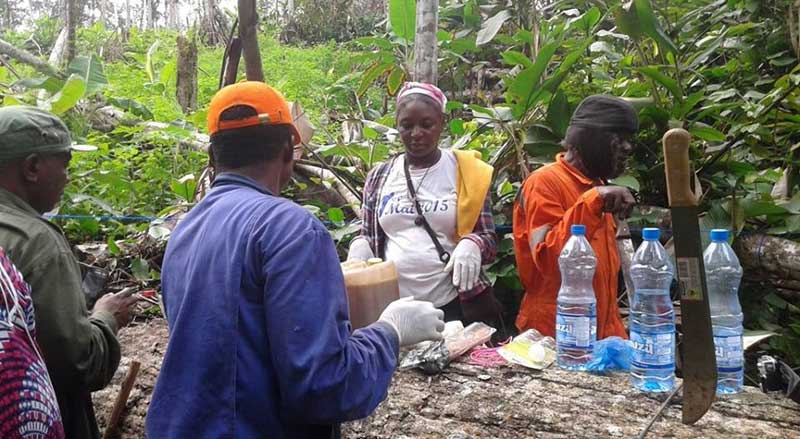
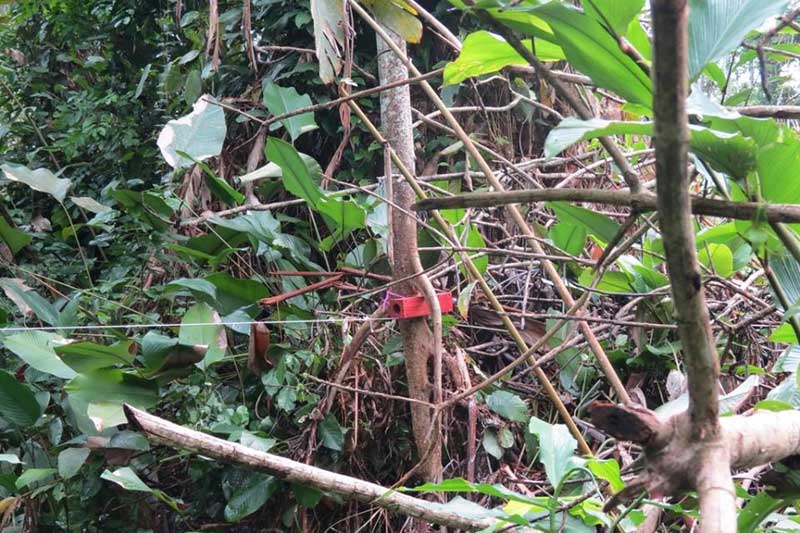
“It’s a nice story, and for a very ‘digital’ fablab such as ours, it’s a project completely devoid of digital technology! We take on projects as they come and continue to DIY without a digital machine.”
Georges Bonnici, La Fruitière numérique
In Lourmarin, the team is now waiting for feedback from the field. It remains to be seen what Cirad and CVT will do with this open source project. Elephant box is a solution to the man-elephant conflict among fifty others that are grouped together in a toolbox developed by Cirad and the FAO. Next step: Georges Bonnici should go and set up other Elephant Boxes in Zimbabwe in February. And he has already been contacted by Kenya…
The website of La Fruitière numérique and info on Elephant Box
